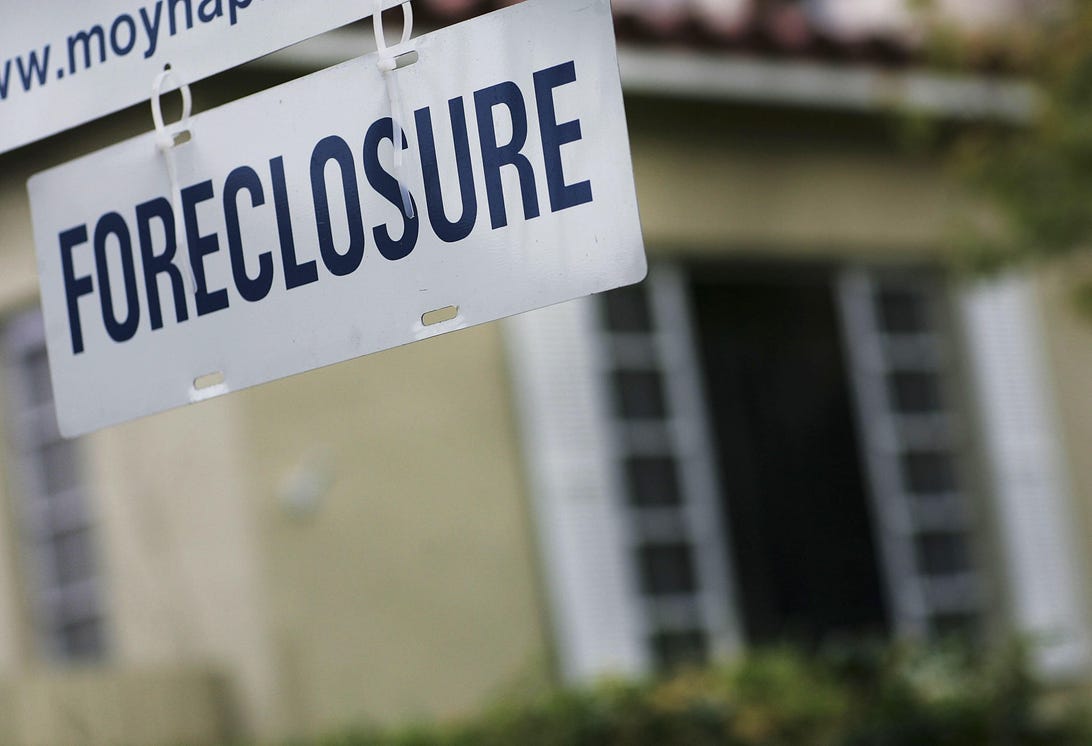

Joe Raedle/Getty
In general, refinance rates for mortgage were varied with one notable rate moving higher. The average rates for a 15-year and 10-year fixed refinances went down, while 30-year fixed-rate refinances increased. Although refinance rates are dynamic and have been higher recently, now could be a good time to refinance a home. Before refinancing, remember to take into account your personal needs and financial situation, and compare offers from various lenders to find the right one for you.
30-year fixed-rate refinance
The average rate for a 30-year fixed refinance loan is currently 4.21%, an increase of 1 basis point over this time last week. (A basis point is equivalent to 0.01%.) Refinancing to a 30-year fixed loan from a shorter loan term can lower your monthly payments. This makes 30-year refinances good for people who are having difficulties making their monthly payments or simply want a bit more breathing room. However, interest rates for a 30-year refinance will typically be higher than rates for a 15-year or 10-year refinance. It’ll also take you longer to pay off your loan.
15-year fixed-rate refinance
For 15-year fixed refinances, the average rate is currently at 3.44%, a decrease of 1 basis point compared to one week ago. With a 15-year fixed refinance, you’ll have a larger monthly payment than a 30-year loan. But you’ll save more money over time, because you’re paying off your loan quicker. Interest rates for a 15-year refinance also tend to be lower than that of a 30-year refinance, so you’ll save even more in the long run.
10-year fixed-rate refinance
For 10-year fixed refinances, the average rate is currently at 3.39%, a decrease of 3 basis points over last week. You’ll pay more every month with a ten-year fixed refinance compared to a 30-year or 15-year refinance — but you’ll also have a lower interest rate. A 10-year refinance can be a good deal, since paying off your house sooner will help you save on interest in the long run. Just be sure to carefully consider your budget and current financial situation to make sure that you can afford a higher monthly payment.
Where rates are headed
We started 2022 with low refinance rates, but there’s been an uptick recently due to two major factors: inflation and economic growth. That said, rates can always rise and fall for many reasons. The spread of omicron, for instance, kept rates low throughout December and the start of the new year. Overall, rates are expected to go up this year, particularly with the Federal Reserve’s decision to reduce its bond purchases and increase interest rates.
We track refinance rate trends using data collected by Bankrate, which is owned by CNET’s parent company. Here’s a table with the average refinance rates supplied by lenders across the US:
Average refinance interest rates
| Product | Rate | Last week | Change |
|---|---|---|---|
| 30-year fixed refi | 4.21% | 4.20% | +0.01 |
| 15-year fixed refi | 3.44% | 3.45% | -0.01 |
| 10-year fixed refi | 3.39% | 3.42% | -0.03 |
Rates as of Feb. 25, 2022.
How to shop for refinance rates
When looking for refinance rates, know that your specific rate may differ from those advertised online. Market conditions aren’t the only factor in interest rates; your particular application and credit history will also play a large role.
Having a high credit score, low credit utilization ratio, and a history of consistent and on-time payments will generally help you get the best interest rates. Researching interest rates online is always a good idea, but you’ll need to connect with a mortgage professional to get your exact refinance rate. And don’t forget about fees and closing costs which may cost a hefty amount upfront.
You should also know that many lenders have had stricter requirements when it comes to approving loans in the past few months. As such, you may not qualify for a refinance — or a low rate — if you don’t have a solid credit rating.
To get the best refinance rates, you’ll first want to make your application as strong as possible. The best way to improve your credit ratings is to get your finances in order, use credit responsibly, and monitor your credit regularly. You should also shop around with multiple lenders and compare offers to make sure you’re getting the best rate.
When should I refinance?
Generally, it’s a good idea to refinance if you can get a lower interest rate than that your current interest rate, or if you need to change your loan term. It’s true that in the past year, interest rates have been at a historic low. But when deciding whether to refinance, be sure to take into account other factors besides market interest rates.
A refinance may not always make financial sense. Consider your personal goals and financial circumstances. How long do you plan on staying in your home? Are you refinancing to decrease your monthly payment, pay off your house sooner — or for a combination of reasons? And don’t forget about fees and closing costs, which can add up.
Some lenders have tightened their requirements in recent months, so you may not be able to get a refinance at the posted interest rates — or even a refinance at all — if you don’t meet their standards. Refinancing can be a great move if you get a good rate or can pay off your loan sooner — but consider carefully whether it’s the right choice for you.